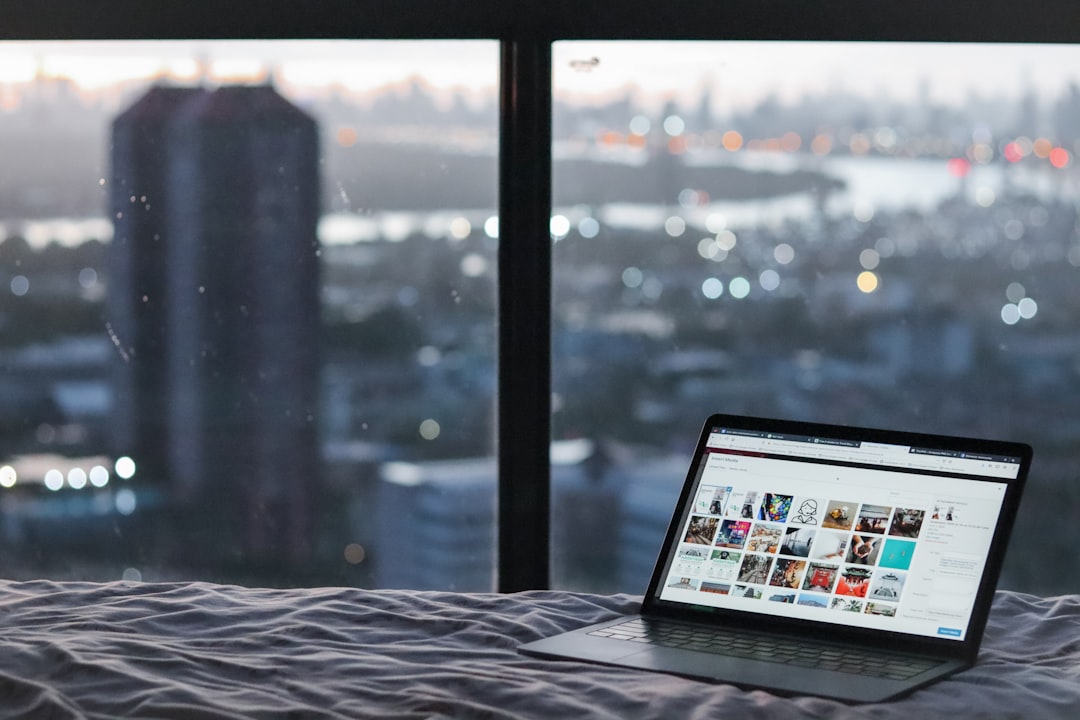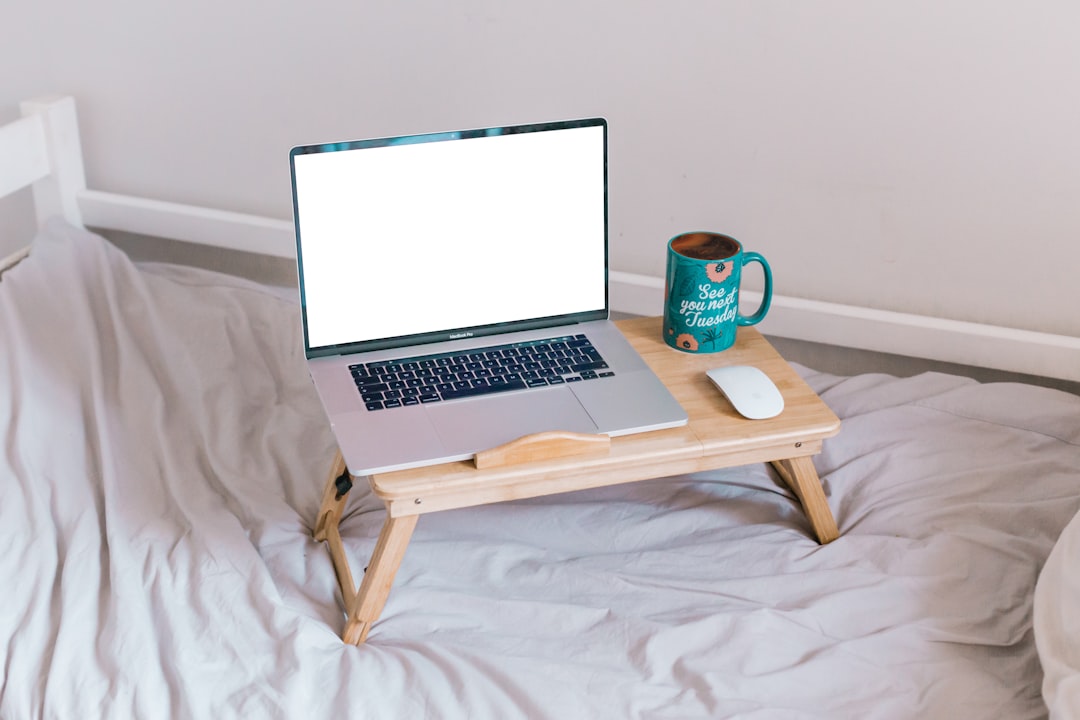Finding the Perfect Café for Remote Work and Boosted Productivity

Introduction
The rise of remote work has turned cafés into unofficial coworking hubs. A well‑chosen café can provide the perfect blend of connectivity, comfort, and caffeine to keep you focused and productive. Yet not every coffee shop is created equal for a full‑day of virtual meetings, deep‑work sessions, and creative brainstorming. This guide walks you through the process of scouting, testing, and settling into a café that supports your workflow while still feeling relaxed and enjoyable.
Why Cafés Matter for Remote Work
A Change of Scenery Boosts Creativity
Staring at the same four walls day after day can sap motivation. A café introduces visual variety—people watching, natural light, and subtle background noise—that can spark new ideas. Research shows that a moderate level of ambient chatter improves divergent thinking without overwhelming concentration.
Cost‑Effective Alternative to Dedicated Offices
Renting a private office or joining a coworking space can be expensive, especially for freelancers or part‑time remote employees. A café offers a low‑cost workspace with the added perk of food and drink, allowing you to allocate funds elsewhere, such as software tools or professional development.
Social Connection Without Distraction
Working from home can feel isolating. Cafés provide a sense of community; a friendly barista greeting you by name or a brief chat with another remote worker can lift morale. The key is to find a spot where social interaction is optional and does not interrupt your tasks.
Core Criteria for the Ideal Remote‑Work Café
Below is a checklist of the most important factors to consider. Use it as a quick reference when you first step inside a new coffee shop.
- Reliable Wi‑Fi – Speed, stability, and a clear password policy.
- Power Outlets – Sufficient number, conveniently located, and not monopolized by a single table.
- Seating Comfort – Ergonomic chairs or stools, appropriate table height, and enough legroom.
- Ambient Noise Level – A balance between quiet and a low hum of conversation.
- Lighting – Natural daylight is best; otherwise, warm, non‑flickering artificial light.
- Menu Variety – Healthy food options, quality coffee, and affordable pricing.
- Noise‑Control Policies – Whether the café enforces a “quiet hours” period or provides private booths.
- Accessibility – Easy entry for people with mobility needs, and proximity to public transport.
- Security – Visible staff, a safe environment for leaving belongings briefly, and a clear policy on lingering after closing.
Assessing Wi‑Fi Quality
Speed Tests
Bring a laptop or smartphone and run a quick speed test (e.g., speedtest.net). Aim for at least 10 Mbps download for video calls, and 5 Mbps upload for screen sharing. If the test shows frequent drops, it may be unsuitable for long meetings.
Stability Over Time
Even a fast connection can be unreliable if the router is overloaded. Spend at least 30 minutes in the café while you work on a typical task (e.g., checking email, editing a document). Note any lag, buffering, or disconnections.
Security Practices
Ask the staff if the Wi‑Fi is password protected and whether it uses WPA2 encryption. Open networks expose your data to potential snooping. If you must use an unsecured network, employ a VPN to encrypt your traffic.
Power Availability and Management
Mapping Outlet Locations
When you first sit down, glance around for available outlets. Some cafés reserve outlets for paying customers only; others allow free use. Take note of the distance from the main seating area—cables should not become a tripping hazard.
Charger Compatibility
Carry a multi‑port USB hub or a universal charger if the café only offers USB ports. A small power strip can be a lifesaver in places with limited outlets, but be discreet and ask staff permission before using one.
Battery Backup Plan
Even with outlets, power outages happen. Keep a fully charged power bank on hand for at least an hour of work. This reduces anxiety and lets you stay productive during unexpected interruptions.
Comfort and Ergonomics
Chair Design
A chair with lumbar support reduces back strain during extended sessions. If the café uses hard stools, consider bringing a portable seat cushion. Comfort directly influences focus; a sore back can become a constant distraction.
Table Height
Standard café tables are often lower than office desks. If you work primarily on a laptop, a lower table may be fine. However, for writing or drawing, a higher surface paired with a laptop stand can improve posture.
Noise‑Canceling Options
Even in a relatively quiet café, occasional bursts of conversation or kitchen clatter occur. Investing in a good pair of noise‑canceling headphones can help maintain concentration without needing a completely silent environment.
Lighting and Visual Comfort
Natural Light Benefits
Sunlight boosts mood and regulates circadian rhythms, which can improve alertness. Choose a café with large windows or a skylight, especially if you work in the morning.
Artificial Light Quality
Avoid harsh fluorescent lighting that can cause eye strain. Warm LED bulbs or pendant lighting that mimics daylight are preferable. If the lighting is dim, bring a small desk lamp or adjust your screen brightness accordingly.
Ambient Noise and Acoustic Environment
The “Coffee Shop Effect”
A moderate level of background chatter—often called the “coffee shop effect”—can enhance focus for many people. It provides just enough auditory stimulation to prevent mental fatigue without being intrusive.
Acoustic Design
Some cafés invest in acoustic panels, soft furnishings, or white‑noise machines to control echo and reverberation. If you notice a lot of echo, it may be harder to hold video calls or concentrate on detailed tasks.
Private Booths and Corners
Look for cafés that offer semi‑private booths, alcoves, or corner tables. These spaces can shield you from direct line‑of‑sight distractions while still letting you enjoy the café atmosphere.
Menu Considerations for Sustained Productivity
Balanced Food Options
A nutrient‑rich meal helps maintain energy levels. Cafés that serve whole‑grain sandwiches, salads, fresh fruit, and protein‑rich bowls are ideal. Avoid places that rely heavily on sugary pastries if you need steady focus.
Quality Coffee and Hydration
Caffeine can boost alertness, but it should be consumed mindfully. A café that offers both espresso drinks and herbal teas gives you flexibility. Also, ensure you have easy access to water—some cafés provide complimentary bottled water.
Pricing and Value
Calculate an approximate hourly cost by dividing the total spent on food and drink by the number of hours you plan to stay. A reasonable range for most remote workers is $2‑$5 per hour, though premium locations may be higher.
Safety, Security, and Etiquette
Staff Presence
A visible staff member who regularly checks tables deters theft and ensures a clean environment. Friendly staff also tend to enforce any “quiet hours” or “no‑laptop” policies more consistently.
Personal Belongings
Keep valuables within sight or use a lockable bag. If you need to step away for a brief moment, ask a neighbor if they can watch your seat, or store items in a small, lockable pouch.
Café Policies
Some cafés limit the amount of time you can occupy a table during peak hours, while others welcome long‑stay customers with a minimum purchase requirement. Clarify any expectations before settling in for an all‑day work session.
Building Community While Staying Focused
Casual Networking
If the café has a “remote workers” board or a regular meetup, consider joining. A brief conversation with another freelancer can lead to collaborations or knowledge sharing.
Respectful Interaction
Maintain a balance between being approachable and protecting your work time. Use headphones to signal you are in “focus mode,” and keep conversations brief unless you’re in a designated community area.
Tools and Set‑Up Tips for the Café Workspace
- Laptop Stand – Elevates screen to eye level, improves posture, and frees up desk space.
- External Keyboard and Mouse – Reduces strain from cramped laptop keyboards.
- Cable Management – Velcro ties keep charging cords tidy and prevent tangles.
- Portable Whiteboard or Notepad – For quick brainstorming without cluttering your screen.
- Noise‑Canceling Headphones – Essential for controlling ambient sound and for clear conference calls.
- VPN – Secures your internet connection, especially on public Wi‑Fi.
- Productivity Apps – Tools like Pomodoro timers, task managers, and focus‑blocking extensions help structure work sessions.
A Step‑by‑Step Process to Test a New Café
-
Pre‑Visit Research
- Check online reviews for Wi‑Fi speed, outlet availability, and noise level.
- Look at the café’s website for opening hours, menu, and any remote‑work policies.
-
First Visit – Quick Scan
- Arrive during a typical work hour (mid‑morning or early afternoon).
- Observe the number of occupied outlets, the flow of customers, and staff attentiveness.
-
Connectivity Test
- Connect to the Wi‑Fi, run a speed test, and note any password requirements.
-
Power Check
- Locate an outlet near a comfortable seat. Plug in a device and ensure it stays connected without tripping any circuit.
-
Comfort Evaluation – Sit for at least 15 minutes.
- Assess chair ergonomics, table height, lighting, and noise.
- If possible, make a short video call to test audio quality and background noise.
-
Menu Sampling
- Order a drink and a light snack to gauge food quality, pricing, and service speed.
-
Extended Stay Simulation
- If the first visit goes well, spend a full 2‑hour block working on a real task.
- Note any interruptions, changes in Wi‑Fi stability, or shifts in ambient noise.
-
Decision Point
- Rate the café on a 1‑5 scale for each core criterion.
- If the average rating meets your personal threshold (typically 4 or higher), add it to your “go‑to” list.
Case Studies: Real‑World Examples
Urban Loft Café – Balancing Quiet and Community
Located in a converted warehouse, Urban Loft offers high ceilings, abundant natural light, and a dedicated “remote‑work” section with power strips at every table. Their Wi‑Fi consistently scores above 25 Mbps, and the staff enforce a “no‑loud‑music” rule after 10 am, preserving a calm atmosphere. The menu includes protein‑rich bowls and fair‑trade coffee, keeping both health and ethics in mind. Frequent pop‑up networking events provide community without sacrificing focus.
Riverside Bean – Ideal for Short‑Burst Productivity
Riverside Bean sits beside a bustling riverwalk, offering a constant background of water and occasional passerby chatter. Wi‑Fi speed is moderate (around 12 Mbps), sufficient for email and document editing but not ideal for HD video calls. The café compensates with abundant power outlets and a rotating selection of freshly baked pastries. The outdoor patio is perfect for quick brainstorming sessions, though the indoor space can become noisy during lunch rush. This spot works best for freelancers needing a change of scenery for short, high‑energy tasks.
Green Leaf Café – A Sustainable Remote‑Work Haven
Green Leaf focuses on eco‑friendly practices, providing biodegradable utensils, locally sourced food, and a solar‑powered Wi‑Fi system. Speed tests show 15 Mbps download, stable enough for most remote work. The interior features reclaimed wood tables and ergonomic chairs, while the large windows flood the space with daylight. A “quiet hour” from 9 am to 11 am ensures uninterrupted focus. Their menu includes vegan protein bowls, fresh smoothies, and organic coffee, supporting both health and sustainability goals.
Tips for Maintaining Productivity in a Café
- Set a Clear Goal – Before you arrive, decide what you aim to accomplish during the session. A defined objective reduces the temptation to drift into idle browsing.
- Use Time Blocks – The Pomodoro technique (25 minutes work, 5 minutes break) works well in cafés. During breaks, stretch, refill your drink, or take a short walk to refresh.
- Limit Distractions – Close unnecessary browser tabs, mute non‑essential notifications, and keep your phone on “Do Not Disturb” while you’re in focus mode.
- Stay Hydrated – Keep a water bottle at your seat. Dehydration can cause fatigue and reduce cognitive performance.
- Plan for the End – As your session winds down, summarize what you’ve achieved, note any pending tasks, and tidy your workspace. This closure ritual helps you transition smoothly back to other responsibilities.
When a Café Isn’t the Right Fit
Even the best cafés have limitations. Recognize signs that a location may not suit your needs:
- Frequent Wi‑Fi drops that disrupt meetings.
- Lack of power outlets, forcing you to constantly move or use a battery pack.
- Excessive background noise that interferes with concentration.
- Unclear or inconsistent remote‑work policies that lead to conflicts with staff.
- High price point that makes extended stays financially unsustainable.
If you encounter these issues, consider alternatives such as coworking spaces, public libraries, or a hybrid model where you split time between home and café.
Building a Personal Café Portfolio
Just as investors diversify their assets, remote workers benefit from having several reliable cafés to choose from. A diversified café portfolio protects you from unexpected closures, peak‑hour crowds, or seasonal changes in ambiance.
Steps to create your portfolio:
- Identify Core Needs – List the non‑negotiable criteria (e.g., Wi‑Fi speed, power).
- Scout Multiple Locations – Use the step‑by‑step testing process for at least three cafés in your area.
- Categorize by Use‑Case – Assign each café a primary purpose: “deep work,” “video calls,” “creative brainstorming,” or “quick tasks.”
- Maintain a Log – Keep a simple spreadsheet noting dates visited, rating per criterion, and any special observations (e.g., seasonal patio availability).
- Review Quarterly – Re‑evaluate each café’s performance, especially if there are changes in menu, staff, or Wi‑Fi infrastructure.
Having a ready‑made list means you can adapt instantly when one café becomes too crowded or when you need a different atmosphere for a specific type of work.
Frequently Asked Questions
Do I need to buy something every time I work at a café?
Many cafés appreciate a minimum purchase, especially during off‑peak hours. A small drink or snack is usually enough to justify occupying a table for a few hours.
Can I bring a laptop stand and external keyboard?
Yes, most cafés allow personal accessories as long as they do not interfere with other patrons. Keep the setup compact and be ready to pack it away quickly if the café becomes full.
How do I handle confidential information on public Wi‑Fi?
Always use a reputable VPN, enable two‑factor authentication on sensitive accounts, and avoid logging into unsecured services when possible.
What if the café runs out of outlets?
Ask the staff if there is a back‑room or nearby wall with additional power. Some cafés have hidden power strips that can be accessed upon request.
Is it okay to take calls in a busy café?
If you need to take a voice call, step into a quieter corner or use a headset with a low‑volume setting. Consider moving to a less crowded area if you anticipate a lengthy conversation.
Final Thoughts
Finding the perfect café for remote work is a blend of systematic evaluation and personal preference. By prioritizing reliable connectivity, adequate power, ergonomic comfort, suitable lighting, and a menu that fuels sustained focus, you can transform a simple coffee shop into a high‑performance workspace. Remember to test each location thoroughly, respect the café’s policies, and maintain a flexible mindset—sometimes the best days are spent in a bustling spot that energizes you, while other times a quiet corner is exactly what you need.
Cultivate a small portfolio of trusted cafés, keep a habit of periodic re‑assessment, and you’ll always have a reliable base where productivity thrives and the aroma of fresh coffee keeps creativity flowing. Happy working!
Random Posts

How Much to Spend in Portugal When Working Anywhere
Discover realistic monthly budgets for living and working anywhere in Portugal, from Lisbon to Porto and the Algarve, with cost breakdowns, sample lifestyle plans, and practical tips to stretch every euro while enjoying the culture
2 months ago

Where to Work and Fly Best Destinations for Modern Digital Nomads
Discover the top digital-nomad hotspots where fast Wi, Fi, vibrant coworking scenes, easy visa options and excellent flight connections turn remote work into adventure.
3 days ago

First Steps Into Nomad Life With Essential Resources
Learn how to turn the dream of digital nomadism into reality with a clear mindset, must-have tools, and practical steps to pack light, work anywhere, and start living a location-independent life today
2 months ago

Explore the Best Online Courses for Life on the Road
Discover the top online courses that empower nomads with remote work, health, visa and travel skills, learn anywhere from a lakeside tablet to a hostel night, and keep growing while the road rolls on.
2 months ago

How to Choose the Perfect Remote Work Hub and Fly Smart
Learn how to pick the ideal remote-work hub by weighing internet, cost, safety and community, then master smart flight strategies to cut costs, avoid fatigue and travel sustainably
1 month ago
Latest Posts

Essential Software Every Remote Professional Should Use
Master remote work with essential tools: instant messaging like Slack, high definition video calls such as Zoom, and asynchronous voice apps. Streamline communication, stay connected and boost productivity.
1 day ago

Mastering Remote Work Productivity for Digital Nomads and Freelancers
Learn proven habits, tools, and tactics that help digital nomads and freelancers stay focused, deliver quality work, and maintain a sustainable lifestyle while traveling the world.
1 day ago

Tech‑Friendly European Towns Perfect for Remote Living
Discover Europe’s best small towns where fast internet, affordable living and vibrant tech communities let you work remotely while soaking up historic charm, lakeside views or mountain air.
1 day ago